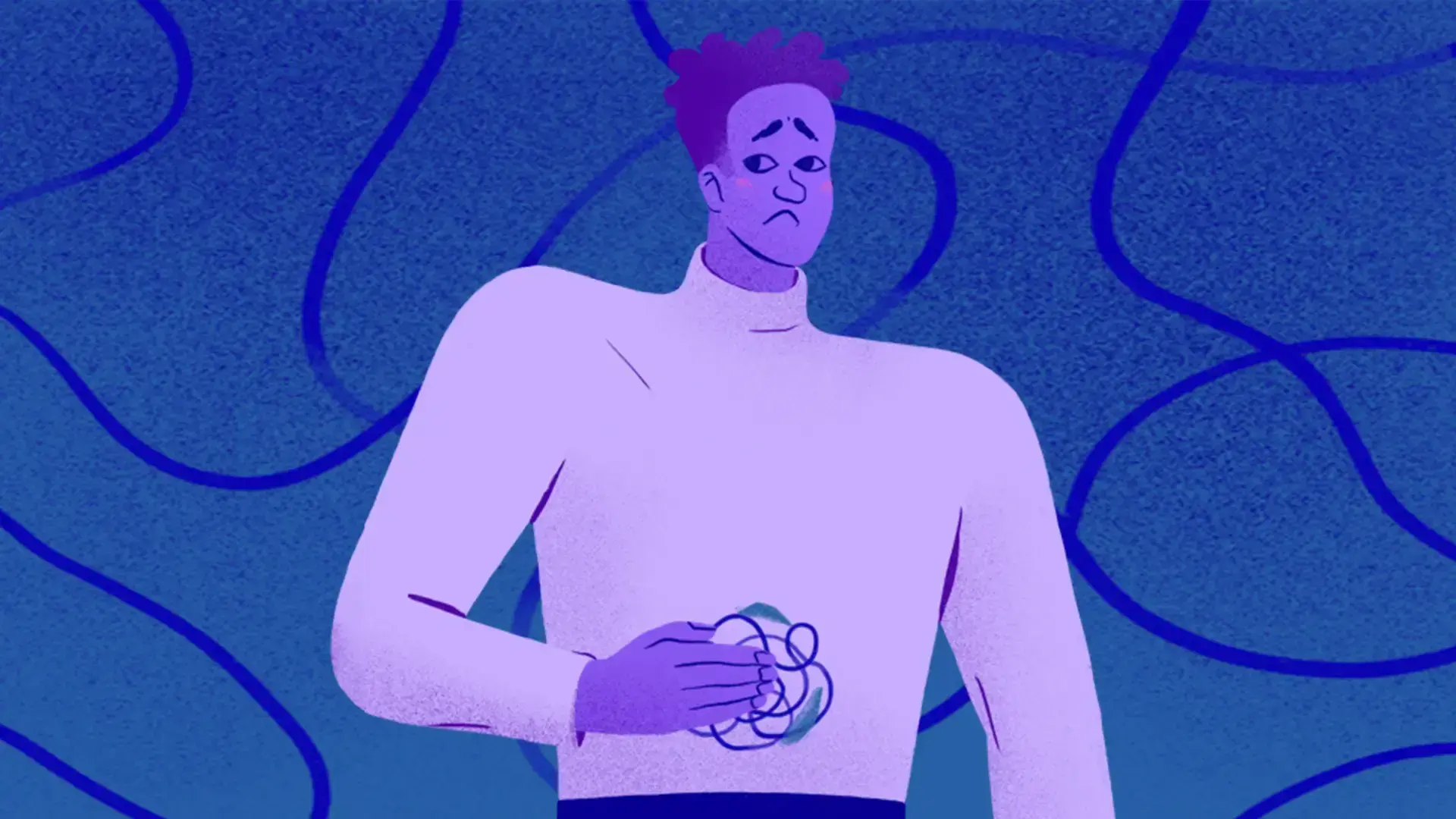It is estimated that 179 million incidents of acute gastroenteritis occur annually in the United States, which can result in diarrhea1. Fortunately, healthy people are likely to recover without complications. When a person is infected, their everyday life is interrupted due to the unpleasant symptoms.
Stomach Flu (Gastroenteritis) Symptoms
Gastroenteritis attacks your intestines, causing signs and symptoms including2:
Nonbloody, watery diarrhea (bloody diarrhea usually means that you have a more serious infection or other condition)
Nausea and/or vomiting
Stomach cramps
Low-grade fever
Muscle aches and headache
Depending upon the cause of the infection, viral gastroenteritis or stomach flu symptoms appear 1 to 3 days after infection. Symptoms range from mild to severe. On average, symptoms only last 1 to 2 days, but occasionally they may last longer. An infected person can be contagious before experiencing any symptoms and can remain contagious from a few days up to 14 days after recovering, depending upon the virus2.
Common Causes of Stomach Flu
The most common causes of stomach flu are:
Viruses
Norovirus in adults
Rotavirus in children
Drinking contaminated water (traveler's diarrhea)
Bacterial food poisoning, caused by the 4 most common germs3:
Salmonella
Staphylococcus aureus (commonly known as staph)
Campylobacter
Clostridium perfingens
What Is Norovirus?
Norovirus is estimated to cause around 19 to 21 million cases of gastroenteritis in the U.S. annually—with most outbreaks happening from November to April4. There are about 2,500 norovirus outbreaks reported annually in the U.S.
Every variation (strain) of the norovirus can cause gastroenteritis. Common symptoms include5:
Diarrhea
Vomiting and nausea
Stomach cramps
Low-grade fever
Body aches and headache
Since norovirus is a very contagious stomach virus, it is easily spread by contaminated food/surfaces or close contact6. The typical incubation period (time it takes you to experience symptoms after getting infected) is 12-48 hours. Having norovirus is an unpleasant experience, but you should start to feel better in 1-3 days7.
There’s currently no specific treatment for norovirus and, as a viral infection, antibiotics will have no effect—but IMODIUM® can help relieve symptoms of diarrhea. Treating diarrhea and drinking plenty of liquids will help reduce the associated loss of fluids and electrolytes, helping you feel better more quickly. Contact your healthcare professional if your symptoms last more than 2 days or get worse, or you’re concerned and feel you need advice.
What Is the Rotavirus?
Rotavirus is a contagious stomach virus that causes severe diarrhea in infants and young children. Before a vaccine was introduced in 2006, almost all U.S. children were infected with rotavirus before their 5th birthday8. Each year, the vaccine prevents an estimated 40,000 to 50,000 hospitalizations among infants and young children in the United States8.
Settings with many young children, such as childcare centers, are the most common sources of transmission. Similar to norovirus, rotavirus can spread by touching your mouth with unwashed hands that are contaminated with rotavirus particles or eating contaminated food9. The symptoms of this easily transmittable virus include10:
Fever (may be high in children)
Vomiting
Severe watery diarrhea (this may continue for 3-7 days)
Abdominal pain
Some adults may have a higher risk of getting rotavirus, including those who are older, those who care for children with rotavirus, or those with compromised immune systems8. Since neither the vaccine nor infection provide full immunity, it is possible to get rotavirus more than once9. The incubation period for rotavirus disease is approximately 2 days and symptoms may last 3-8 days9.
Severe dehydration resulting from the frequent bowel movements and vomiting is a serious health concern in children. Here are some symptoms of dehydration to look out for in children9,10:
Lack of tears (or few tears) when crying
Dizziness when standing
Excessive thirst or dry mouth
Reduced urination
Unusual sleepiness or fussiness
Stomach Flu Prevention and Medicines for Kids
Children are more at risk of severe dehydration from gastroenteritis illnesses, such as rotavirus. A good way to prevent severe rotavirus illness is ensuring that your kid is routinely vaccinated.
The best ways to treat the stomach flu in kids are hydration and rest. Here are some tips2:
Choose an oral rehydration solution—this helps replenish electrolytes
Start with small sips and gradually increase, so they don’t vomit it up
Once your child has stopped vomiting, offer a bland diet
Consult a healthcare professional if your child’s symptoms are not improving after 24 hours or if you’re concerned
Wash your hands frequently and clean surfaces with a disinfectant to avoid viruses and diseases in general. Norovirus and rotavirus particles can remain on surfaces for many days if left without proper cleaning and disinfection.
While there are no medications to treat gastroenteritis, over-the-counter anti-diarrheal drugs such as IMODIUM® Anti-Diarrheal Oral Solution For Children Ages 6 and Up are very useful to treat diarrhea symptoms. IMODIUM® allows your body to absorb fluids and salts again to restore the consistency of stools. For children 2-5 years (34 to 47 lbs), please make sure to ask a doctor before use, and, for children under 2 years (up to 33 lbs), do not use.
Stomach Flu Medicines and Remedies for Adults
Preventing dehydration is important when you are recovering from gastroenteritis. To aid in your recovery, try the following2:
Let your stomach settle – avoid solid foods for a few hours to let your body recover
Try sucking on ice chips or taking small sips of a rehydration solution
Slowly ease back into eating - once your symptoms have subsided start by eating bland foods
Get plenty of rest
IMODIUM® products contain an active ingredient called loperamide, which works to help restore your gut’s natural rhythm so you can start to feel like yourself again. If symptoms persist for more than two days or get worse, consult your healthcare professional.
Maintaining basic hygiene and cleaning habits can help stop the spread of gastroenteritis-causing germs11:
Wash your hands with soap and water (alcohol hand gels do not kill the virus) and disinfect surfaces that could be contaminated with a bleach-based household cleaner
Avoid eating raw, unwashed food
Wash any contaminated bedding or clothing separately with bleach
Clean the area surrounding the toilet with a bleached-based household cleaner
When To Call a Doctor
Healthy people are likely to recover from stomach flu or gastroenteritis without complications. However, some cases may warrant a call or trip to the doctor. If you’re an adult, call your healthcare provider if you have the following severe symptoms2:
Not able to keep liquids down for 24 hours
Dehydration—signs include excessive thirst and dry mouth, reduced or dark yellow urine, severe weakness, or lightheadedness
Vomiting and/or diarrhea that continues for more than 2 days
You see blood in your vomit or stools
Severe stomach pain
A fever above 104 °F
Take your child to a healthcare provider right away if you notice these signs or symptoms2:
A fever of 102 °F or higher
Extreme tiredness, irritability, or pain
Bloody diarrhea or diarrhea that lasts for more than 24 hours
Dehydration — compare how much they drink and urinate when sick versus when they are well, and watch for signs such as thirst and crying without tears
Persistent vomiting




